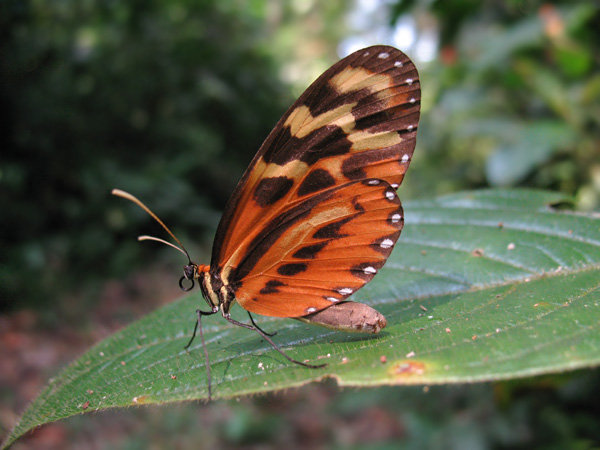Research
Speciation with gene flow
Species boundaries are porous, especially among recently diverged species. When speciation occurs in sympatry or parapatry, the divergence of the taxa occurs in the face of gene flow. Even in cases of allopatric divergence, the species may continue to exchange genes following secondary contact. We are investigating the extent of such post-speciation gene flow, and mechanisms that promote divergence in spite of the homogenizing effects of gene flow. We study speciation with gene flow in several systems including Heliconius butterflies, wood ants, cichlids and tawny dragons.
Adaptive introgression is a special case of gene flow, involving the flow of adaptive alleles among species. In Heliconius it appears that some of the convergent colour patterns shared among closely related species (e.g. H. melopomene, H. timareta and H. elevatus) may be a result of introgression of adaptive colour pattern alleles among the species.
Adaptation and speciation in Alcolapia soda lake cichlids
Alcolapia soda lake cichlids diverged from freshwater taxa a million years ago, and the four described species live in East Africa’s soda lakes Natron and Magadi. These lakes contain some of the most hostile aquatic environments known to support teleost fishes. Alcolapia have adapted to survive in extreme aquatic conditions of high pH (8.8-10.2), high salinity and high temperatures (30-43°C). These species have the highest recorded metabolic rate known in fishes and among the many physiological adaptations, they are the only noted 100% ureotelic fish, have highly derived sperm morphology, are facultative air breathers, and have a specialised trifurcated gut. Geological evidence suggests that this adaptation may have occurred over as short a period of time as 10,000 years. These fishes belong to the the genus Oreochromis, containing the commercially farmed Nile tilapia (O. niloticus) and other important aquaculture species. We are studying adaptation and speciation in this group of cichlids.
Phylogenetics of ithomiine butterfly genera
There is an ongoing international effort to obtain complete phylogenies of the various Ithomiine genera (glasswing butterflies) using mitochondrial and multiple nuclear genes. One of the goals of these complete phylogenies is to understand the evolution of mimicry colour patterns. We are involved in constructing a phylogeny of the Melinaea and Mechanitis genera. Members of the genus Melinaea are thought to drive the black/brown/orange butterfly mimicry rings (to which the silvaniform Heliconius species belong). Intriguingly, initial results appear to indicate that species in this genera have shown very rapid recent speciation, indicating that many of the colour pattern mimicry rings may be of recent origin and could have arisen long after speciation.
Heterozygosity-fitness correlations in pinnipeds
Many studies have reported correlations between an individual's fitness and their heterozygosity measured using genetic markers. In particular, several pinniped species show such correlations at a number of fitness traits. In collaboration with Joe Hoffman (Bielefeld University), we are investigating whether these correlations are the result of inbreeding (genome-wide effect), or whether they represent local genetic effects.


